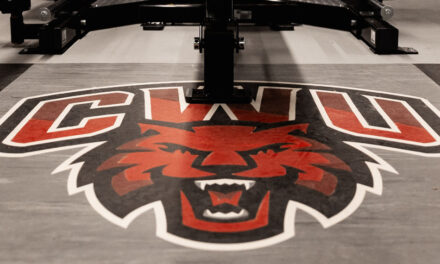The value of a strong alumni network goes far beyond nostalgic reunions and check-ins. Whether helping current athletes navigate college recruitment, serving internships, or funding projects, staying in touch with students offers many advantages. The key lies in treating alumni networks as a vital ecosystem, not a side project.
Too often, alumni relations are reactive — reduced to bland fundraising emails or last-minute invitations. When groups are built proactively and naturally, they result in meaningful connections. Creating a pipeline of engaged alumni starts when athletes are still in uniform. Systematizing outreach, tracking athletes post-graduation, and segmenting groups by class year leads to much higher levels of connection and involvement.
A system for engaging alumni
What is the goal of alumni engagement for your program? Is it volunteer mentorship? Networking events? Fundraising? Align outcomes with your department’s needs, then build systems that make it easy for students to stay involved. At large-enrollment schools, even a small amount of participation can result in significant traction. Using a customer relationship management (CRM) tool — such as Graduway or EverTrue — helps manage data and maintain outreach.
The first 12 months after graduation are critical. Most athletic departments lose contact with athletes once they leave campus. Creating a post-graduation communication plan that includes check-in messages, LinkedIn connections, or short surveys maintains that connection. Capture what sports they played, what career they’re pursuing, and how they can stay involved. To take it a step further, map out a quarterly touchpoint schedule with updates, success stories, and invitations to department events. Consistent, casual communication keeps your alumni network engaged without overwhelming them.
Once connections are established, track alumni career paths and invite them to host Zoom Q&As or attend career panels. These interactions are highly informative, preparing current students for life after high school. This cycle of alumni mentorship further encourages students to contribute after they leave high school.
Alumni to strengthen your school’s workforce
Former athletes can return not just as volunteers — but as employees. Alumni already understand the school culture, the community’s expectations, and the demands of your program. Alumni staff members bridge generational gaps and inject authenticity into your culture. Many programs have found success by hiring former students as assistant coaches, strength trainers, substitute teachers, or operations assistants — like bus drivers or referees — during transition periods or staff shortages.
Beyond athletics, former student-athletes thrive in roles that require strong communication, leadership, and relational skills. Positions in admissions, student support services, academic advising, and even alumni engagement are good fits. Some schools have introduced graduate assistant-style roles for recent college grads — short-term contracts that allow alumni to gain work experience while mentoring students going into college. Hiring former students sends a strong message to current athletes: there’s a commitment to long-term student development.
Giving through shared purpose
Alumni cannot only contribute through direct work, but passively through fundraising. Alumni athletes are likely to support financially when they see their tangible impact. Build campaigns around specific needs and outcomes — not abstract goals. Start with small donations for weight room updates or essential sport equipment. Match these requests with specifics on how they helped the next generation.
To make fundraising sustainable, integrate options for donating into annual traditions. Add links to homecoming invitations, create alumni-of-the-month spotlights in a newsletter, and celebrate milestones like promotions, weddings, births to reinforce the lifelong connection. Don’t forget to thank people. Personalized thank-you notes, short student videos, or alumni-exclusive swag goes a long way. Sustained giving starts with sustained relationships — and personalized messages show that support is appreciated.
Long-term alumni involvement
Ultimately, the goal is to embed alumni into the fabric of your athletic department. From mentorship programs to staffing and fundraising opportunities, there’s countless ways to formalize involvement. Schools that prioritize real connections create networks of alumni that provide great resources for your program.
Alumni athletes are already invested in your program — they lived it. When athletic directors build systems that respect their time, align with their interests, and show real impact, alumni are more than willing to give back. And not just financially. The ripple effect of sports alumni mentorship — from career readiness to increased visibility — can transform an athletic department’s reach and reputation.










